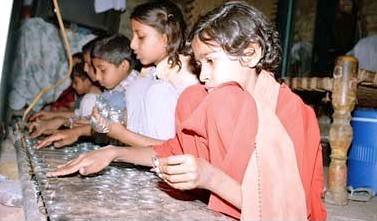 Dispatches
DispatchesLaw students and law graduates in Pakistan are reporting for JURIST on events in that country impacting its legal system. Mashal Asim Khan is an LLB student in the University of London External Programme at The Institute of Legal Studies (TILS). She files this from Islamabad.
On August 31st, the government of the Pakistani province of Punjab was urged by all parties present at a provincial policy dialogue organized by Search for Justice, Children Advocacy Network Pakistan, the National Commission for Human Rights, and the Child Protection and Welfare Bureau (CPWB) Punjab, to take immediate legislative action to effectively outlaw child domestic labor. The speakers highlighted that it is not only a blatant violation of children’s rights recognised by the UN Convention on the Rights of the Child, but also a violation of their fundamental rights protected by Pakistan’s Constitution. The executive director of Search for Justice stated that the outlawing of child domestic work holds great significance and demonstrates a firm commitment to protecting children from dangerous and exploitative environments, as well as abuse, neglect, and the denial of education.
This urgency to advocate for justice and shed light on the issue of child domestic labor follows recent cases of abuse against several child workers. This neglect has led to tragic consequences and evidence of that can be found in Ranipur town in the province of Sindh, where Fatima Furiro, a 10-year old domestic worker was tortured to death on August 14th. The incident first caught the media’s attention when a video was made public on social media, showing the victim’s body bearing obvious marks and bruises, while she was struggling to sit up and soon collapsed.
The culprit, Asad Shah Jeelani, under whom Fatima was employed as a ‘housemaid’ was soon arrested and a first information report was lodged under Sections 302 (premeditated murder) and Section 34 (acts done by several persons in furtherance of common intention) of the Pakistan Penal Code. Parents of the victim were initially silenced by the influential family and were hesitant to give statements, attributing the child’s death to illness but then later revealed that their daughter was subjected to violent abuse and died due to the injuries she suffered.
A week after this incident, the police recovered three more women and four minor girls who were held captive in his mansion, all of whom detailed the violent treatment that they suffered. Fatima is not the only child that has died at the hands of her employer, a month earlier in July, 14-year-old Rizwana ended up in the intensive care unit for her injuries sustained as a result of brutal torture inflicted upon her. The girl’s family said she worked as a maid for a civil judge in Islamabad for six months without being paid her wage. Earlier this year 13-year-old Zainab was strangled to death by her employer in Gujranwala.
This shows that despite the introduction of various international and regional legal instruments regarding child labor, it has yet to materialize in a country like Pakistan where half the population is under the age of 18. The Punjab Domestic Workers Act 2019 was enacted which intended to safeguard rights and regulate employment. The act offers legal protection to domestic workers, restricts bonded/forced labor, offers medical care and establishes a domestic worker’s welfare fund.
However, the minimum age of employment is set at 15 years under Article 3 of the Act, rendering the idea of protecting minors obsolete. Furthermore, no safe working conditions have been specified for minors of 15-18 years of age, meaning they will be working unsupervised as labor inspectors lack the authority to investigate how domestic workers are being treated. Additionally, provided a minor is rescued from their abusive workplace, there is no mention of a complaint process or rehabilitation programme for a child domestic worker.
Pakistan also passed the Islamabad Domestic Workers Bill 2021 that was ratified into an act in 2022, outlawing child labor in domestic work completely. However, only the federally administered territory is subject to the statute; provincial governments have not yet done the same. This shows that Pakistan lacks effective comprehensive enforcement measures for its child labor laws and policies.
Entirely attributing this problem to Pakistan’s legislative reforms, or lack of, however, would not be appropriate. Women and children are compelled to accept domestic work as their sole alternative due to social attitudes and other driving factors. It is a widely recognised practice in Pakistan because of poverty, rising inflation, lack of other opportunities and the need to contribute to the family’s overall income. Additionally, due to Pakistan’s ever-growing population and increased unemployment rate, child labor is easily available and unregulated.
It is a critical source of employment for many which explains why despite there being thousands of cases of abuse and mistreatment, only a handful of them have come forward and caught the public’s attention. Victims are compelled to remain silent either because they fear losing their only job, because of the nature of the abuse, or because of the employers’ social standing. It is safe to say that these incidents predominantly emerge from the households of powerful men and women who are engaged in what are regarded as ‘upper-class’ or ‘respected’ professions. This proves that it is not a question of awareness but rather, the feeling of entitlement and superiority which is so culturally ingrained in this country that it appears people have become desensitized to it. Addressing these deeply rooted social and cultural norms regarding child domestic labor may help change their reality.
These children do not have a legal safety net, which is why child domestic labor should be completely eradicated by either criminalizing it outright, or by at least ensuring that laws pertaining to child domestic workers are implemented effectively and that children’s working environments are supervised to ensure they do not interfere with the child’s education and health.

